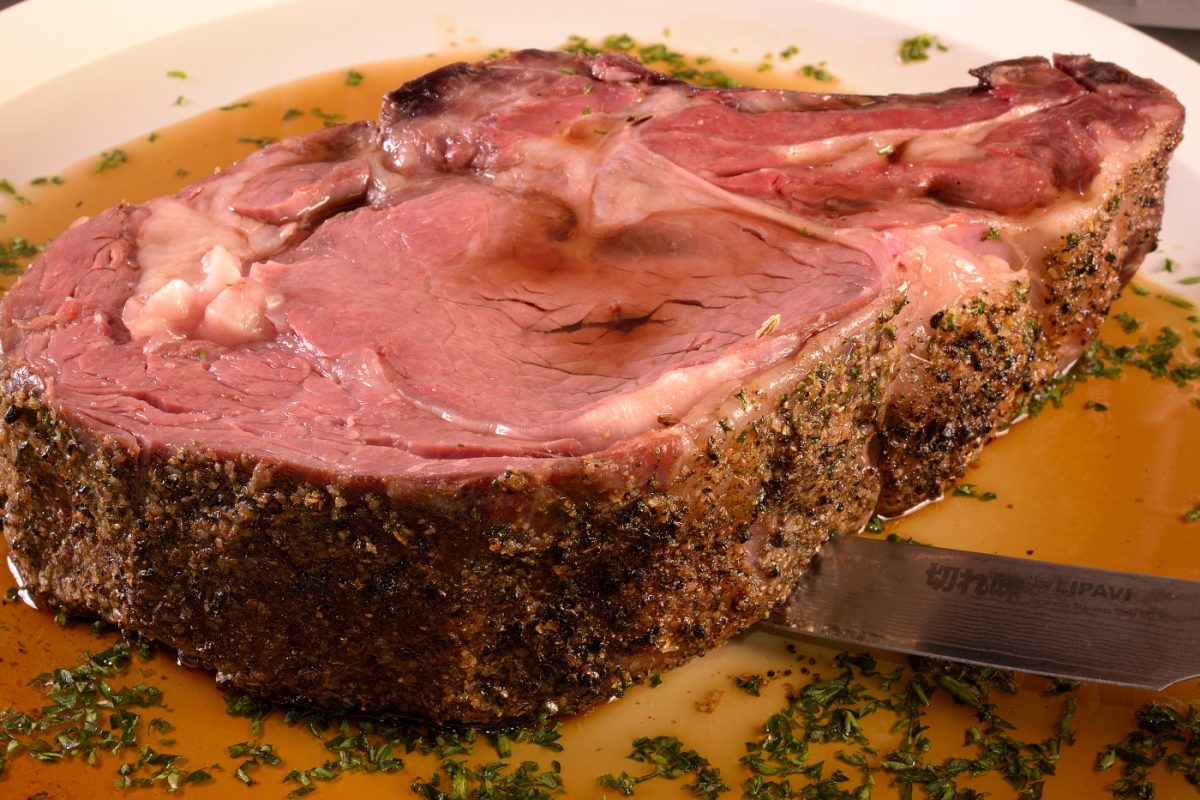Prime rib, redefined

Above: Lipavi C10 container, N10 polycarbonate racks. Lipavi C10L-UNIR lid.
Actual prep time: 1 hour
Serves 1+
Level of difficulty 2.0
Dry aging beef
Dry aged beef is highly prized among a growing number of aficionados. It is also prohibitively expensive for hotels/restaurants to execute. The space- and time-intensive process takes 30-60 days or even longer. However, dry aging your beef is not absolutely necessary to achieve a desirable result. This recipe will work for any rib eye “steak” that weighs at least 24 oz/680 g, with or without a bone.
Procedure

We used a bone-in rib eye roast that we dry aged for 45 days using UMAi Dry® products. Visit the link HERE for a detailed explanation of the process.

Once the dry aging process is complete, the roast’s surface becomes dark and hard to the touch.

The very ends of the roast are removed and reserved. Once the steak/roast is cut, you can see that the pellicle is actually less than 0.25″/6 mm.

Use a sharp knife to shave off the crust and use the trimmings to make a stock/jus as explained HERE. Season the completed stock with kosher salt and keep warm. Preheat your sous vide bath to 132 F/55 C for “medium rare” or your desired degree of doneness explained HERE.

Vacuum seal the steak/roast into a heat rated vacuum bag. Then, insert into another bag and vacuum seal again. This protects the surface from excessive discoloration.

Process for 4 hours.

Remove from bath.

Remove from bag and harvest the juices as explained HERE. We used a deli slicer to remove an extremely thin (2 mm) “slice” from the surface. Ultimately unnecessary, the intention was to help create the appearance of being “freshly cut.” Preheat a dinner plate in a 170 F/80 C oven.

Sprinkle some seasoning on a plate. Carefully coat the edge of the rib eye with the egg white solution. This creates a sticky surface for spices to cling to. Dip the edge in your seasoning mixture and stand on the heat proof screen.

Coat (or drizzle) the edge only with the vegetable oil spray to help diffuse heat.

Set the propane torch low enough so that it barely stays lit. Brown the crust.

The egg whites harden because of the heat and the desired effect is achieved.

Lay the cut on its face and finish browning the bone side.

Lay your prime rib on the heated plate and splash with the seasoned stock that you made from the trim.

Don’t forget the Lipavi steak knife!
Norm
Visit us live on Facebook at SVR–Sous Vide Resources; Low Temperature Pasteurization, Sous-B-Q™, | Facebook
